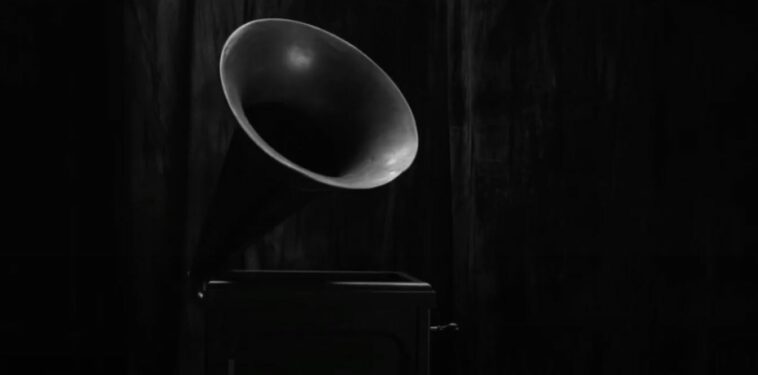It’s a hard thing to estimate the long term influence of any particular artist or album; however, the case could certainly be made for Kid Cudi as indirectly the most influential artist of the 2010s. He opened the decade with his seminal Man on the Moon albums, pioneering a hallucinogenic style of melodic hip-hop that since became arguably the dominant sound of the mainstream, having undergone reinvention by artists such as The Weeknd, Drake and Travis Scott. All these artists were of course influenced as much by each other as Cudi and there was the collision of more than one star involved, with Kanye West’s 808’s & Heartbreak (in the creation of which, Cudi was instrumental) also a key player, as well as more underground acts. Nonetheless, Cudi’s lyrical exploration of mental illness and psychedelic, indie-rock-influenced atmosphere has pervaded the mainstream and dissolved the boundaries of many different genres.
However, as influential as his first two albums may have been, Cudi himself slowly receded from the limelight, amid reports of an extremely unstable mental state and a sporadic series of releases that seemed to testify to the same. He has quietly staged a return to the spotlight in 2020, four years after his last solo album, dropping a superbly atmospheric comeback single “Leader of the Delinquents” and a pair of unlikely team-ups. First the US number one single “The Scotts”, where he played somewhat second fiddle to Travis Scott (whose progressive selling out would deserve an article of its own) and then more surprisingly, “The Adventures of Moon Man & Slim Shady”, which…well, could’ve been a lot worse.
He followed this string on non-album singles with the announcement of a long-awaited third entry in his Man On the Moon series, a full decade since the last. The announcement included the album cover, by artist Sam Spratt, and on a side note, every one of the three album covers Spratt designed this year is one of the best of the year, the other two being Logic’s No Pressure and 070 Shake’s Modus Vivendi. The cosmic, psychedelic look of the cover is a perfect match for the album, moody, atmospheric, hypnogogic and eerily beautiful.
Returning to the Man On the Moon is a tough prospect in 2020. As previously intimated, the landscape of music is totally different from the one of 2009, to which the first Man On the Moon arrived as such a breath of fresh air. With such an influence, Cudi’s sound could easily have come across as primitive, dated or pedestrian. Fortunately, Cudi has adopted enough from his contemporaries not to sound exactly the way he did in 2010, but not so much as to lose his original appeal.
The album sees the return of many of the same producers from Cudi’s past, including most notably Dot da Genius, as well as Mike Dean. The trippy, introspective atmosphere is conjured with the same uneven beat patterns, warbling vocal lines, spectral synths, low-fi guitars and of course, Cudi’s trademark humming. Many tracks here wear the colours of a Travis Scott, with whom Dean has worked extensively. With vocals swimming in autotune and echoing ad-libs, “She Knows This” could have come straight from Scott’s opus Rodeo, which elevated this style of hallucinogenic trap to the same cinematic, ambitious heights to which Cudi aspires here.
However, Cudi’s lyrics are generally headier and more introspective, and the undulating vocal lines of tracks like “Dive”, “Sad People” and “Elsie’s Baby Boy (flashback)” are one hundred per cent Cudi. The latter track is the most noticeable example of another Cudi trademark, generous sampling, this time of the Animals classic “House of the Rising Sun”. The sample is so instantly recognisable; it’s hard not to let it detract from one of the weaker tracks, which is a shame because the story of childhood Cudi attempts to weave on the track could have made the song a highlight, instead of the album’s least replayable track.
None of the previously mentioned singles are included on Man On the Moon III: The Chosen, instead the single is the unexpected detour into the drill, “Show Out”, featuring standout appearances from the late Pop Smoke and Skepta. The track doesn’t stick out too much on the track-listing, massaged smoothly into the trippy atmosphere. However, it’s hard to really hear Cudi’s own stamp on this popular sound, with the features and cavernous production so stealing the show. It’s a rare moment of Cudi ceding the spotlight on the record, which isn’t really desirable for the single. However, the track does deliver a surprisingly formidable version of this drill sound regardless.
Perhaps nothing is so suggestive of the many years to pass since the last Man On the Moon as the feature list. None of these albums are overloaded with features, but where the first two included appearances from old school artists Kanye West, Common, Chip Tha Ripper and Mary J. Blige, here, besides Pop Smoke and Skepta, we have emo-trap balladeer Trippie Redd and alt-rock rising star Phoebe Bridgers. The former is understandable, as a clear disciple of Cudi’s dramatic emotional style and Trippie acquits himself with a strong chorus. The latter more surprising, but no less successful, with Cudi and Bridgers duetting beautifully on their track “Lovin’ Me”.
Throughout, Kid Cudi seems to have aged successfully into 2020 with Man On the Moon III: The Chosen. He doesn’t reinvent his style, but rather accommodates some successful sounds that have only been done so well a couple of times before. Cudi’s raw, wounded style of murmur-singing can be hit and miss, but he’s mostly en forme for the duration. There are no fireworks like on his Kids See Ghosts side project and some parts may sound a bit too Travis Scott, but Cudi and his producers deliver a quality, and cinematic version of the style, returning it to a level of artistic ambition it too often lacks, delivering one of the best pop-rap and R&B albums of the year.

